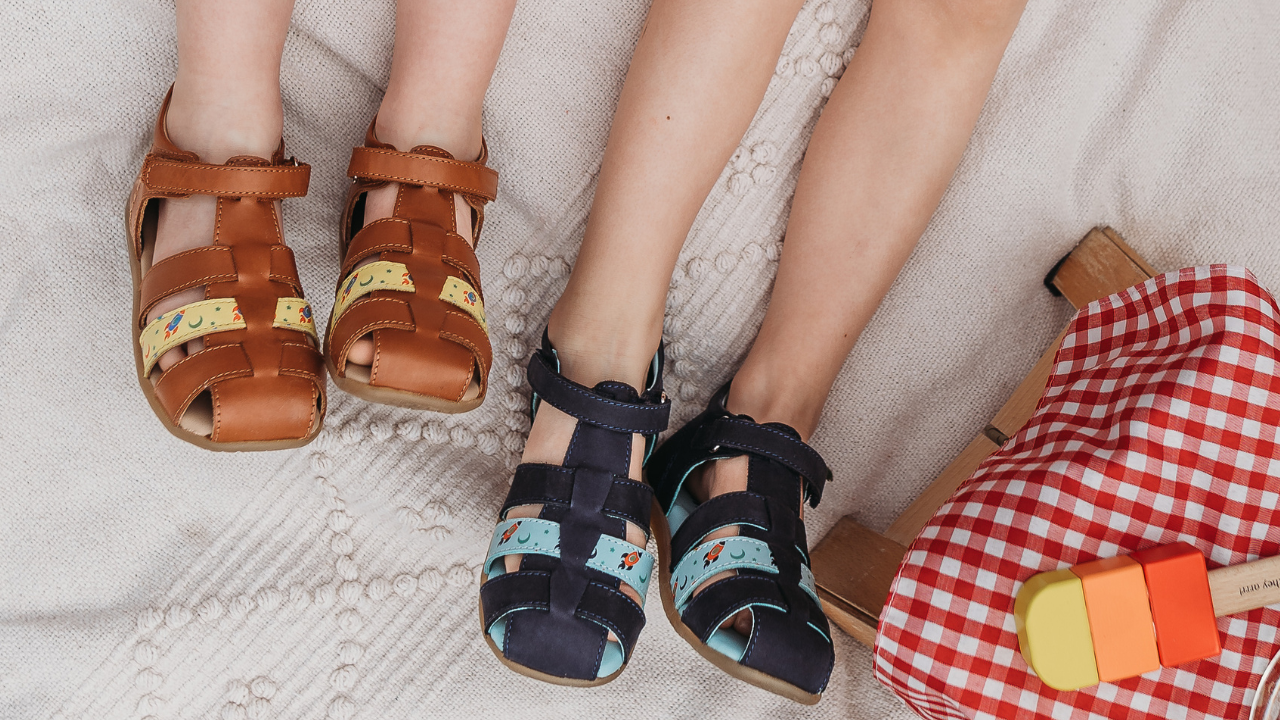
Written by Jane Magnani at Babbu.
Your little one taking those first steps is an unforgettable moment for any parent!
Walking is an essential motor skill that helps your baby learn about and interact with their environment, practice physical abilities and socialise with other children during play. It is also an essential element in developing physical health and fitness.
Your little one will naturally develop the coordination, balance and strength they need to move through exploration, imitation and sheer curiosity.
Even though they progress through different stages, you can be sure their first steps will always be special.
0-3 months:
- They can move their head from side to side
- They can flex and extend their arms and legs
- They can raise their head and chest when lying on their belly.
- Moves legs and arms off of the surface when excited
- Able to bring hands to mouth
4-6 months:
- Babies learn to roll over from their stomachs to their backs and vice versa
- They can sit up with support
- They begin to learn how to reach and grab for objects
- While standing with support, accepts entire weight with legs
- Reaches for nearby toys while on tummy
- While lying on back, reaches both hands to play with feet
7-9 months:
- Babies learn to crawl, although some may skip this stage and go straight to cruising or walking
- Sits without support
- Sits and reaches for toys without falling
- Moves from the tummy or back into sitting
- They can pull themselves up to a standing position
10-12 months:
- Pulls to stand and cruises along furniture for support
- They begin to take their first steps and eventually learn to walk independently
- Stands alone and takes several independent steps
- Moves in and out of various positions to explore the environment and get desired toys
- Maintains balance in sitting when throwing objects
13-18 months:
- Walks independently
- Squats to pick up a toy
- Stacks two objects
19-24 months:
- Runs
- Starts to jump with both feet leaving the ground
- When walking, they can pull toys behind them
- Stands on tiptoes
- Climbs on low furniture
- Kicks large ball
- Goes up and down stairs with support
The First Year
Your baby is going through tremendous developmental progress in their first year. Physically, they are mastering the skills that will ultimately enable them to run and walk, like supporting their weight, balancing without aid, controlling their upper body and other necessary capabilities. Walking is the end-product of months of motor development. They must build these skills to stand and eventually take those crucial steps.
Your baby must explore and play on their stomach and back each day to develop their motor skills. Provide plenty of opportunities for them to move freely in a safe environment and give them ample space. This helps to build strength in their muscles, increases their awareness of sensations and reactions, and encourages them to move independently. To ensure this happens, avoid long periods in buggies and car seats.
Tummy time
Tummy time allows your little one to explore their own body and discover how their head, limbs and neck move. By performing activities on their tummy, your baby will become stronger, better able to control their movements, and have improved neck and shoulder muscles to support their progress when learning to roll over, sit up, crawl and eventually walk.
Rolling
Allow your baby ample opportunities to explore its environment. Place a few toys in front of them while they are on their back and tummy throughout the day. They will attempt to move towards the objects, typically first learning to roll from front to back before being able to roll back to back. This will be their first experience of independently getting to something they desire!
Sitting
Instead of leaving your baby lying flat on the ground, try letting them sit up and observe the world from a different angle. This can be done by placing them on your lap or providing support when they sit up. As your baby gets bigger and more stable, try gradually providing less support so they can learn to sit up independently.
In contrast to high chairs, sitting on the floor helps them practice independent sitting. In addition, it allows them to develop their ability to move around. Therefore, try to give your baby a chance to practice sitting independently on the floor.
Moving from lying to sitting
To strengthen their tummy, back and shoulder muscles which will help them to crawl and walk, encourage your baby to transition from lying to sitting up frequently. Each time you go to change their nappy or pick them up off the floor, take their hands and provide a gentle pull as you help them move into a sitting position. Give your baby a chance to keep working at it; before you know it, they'll be able to quickly pull themselves up!
Crawling
Your little one has been progressing by playing on their stomach and back and practising transitioning from lying down to sitting. All this effort has been helping them build up their core muscles, and they should now be comfortable enough to lift themselves up on their hands and knees. This is a precursor to their upcoming milestone of crawling!
Remember that crawling does not necessarily have to mean using their hands and knees; some babies have a unique technique of crawling using their elbows and legs on the floor, often called the commando style.
To make things easier, create a gripping surface for your baby to crawl on, such as a rug or carpet. Suppose your house has laminate or wooden flooring. In that case, your baby might be doing a different version of crawling, like the bottom shuffle instead.
When your baby is finally crawling, climbing stairs will teach them how to stand and walk (with supervision).
Moving into standing
For your baby to take their first steps, they need to have the capability to sit, transition into a kneeling position, and eventually stand up on its own.
Your baby should have access to appropriate height surfaces to support their pulling-up, such as coffee tables, couches, chairs, etc., yet be mindful of the furniture's sharp edges and corners.
As a parent, we naturally want to purchase various devices and accessories for our babies which we think might help them with this process, but try to resist the urge to invest in items such as door bouncers and standing/jumping baby gyms, as their use can restrict physical development.
These items may also cause your baby to adopt an on-tiptoe stance and arch their back, making it challenging to learn to remain upright and move around with a flat foot.
Walking
Parents eagerly await the last major milestone of their baby - walking - which usually occurs between 12-18 months. To achieve this milestone, babies must first stand with furniture support, navigate around the furniture, walk with push-along walkers, or take hands.
These are all significant steps that vary in duration depending on the baby, with additional influences like laminate flooring at home or distant furniture requiring them to crawl in between.
More about Babbu
Babbu is an online learning platform designed to support, reassure and empower parents and their children in the first critical few years. We have a simple but ambitious vision: a world in which no child is left behind. We provide tailored educational activities and content to support parents at home, with over 40 hours’ of bite-sized, engaging, videos, podcasts, blogs, activities, and songs.
Fore more information visit: https://www.babbu.co.uk/







